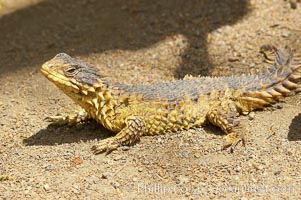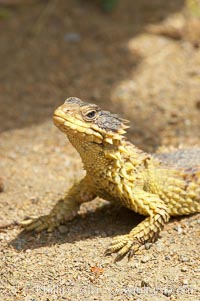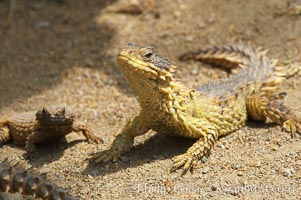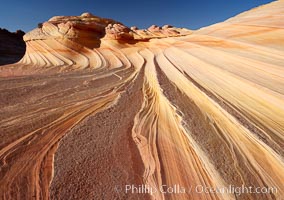
The Second Wave at sunset. The Second Wave, a curiously-shaped sandstone swirl, takes on rich warm tones and dramatic shadowed textures at sunset. Set in the North Coyote Buttes of Arizona and Utah, the Second Wave is characterized by striations revealing layers of sedimentary deposits, a visible historical record depicting eons of submarine geology.
Location: North Coyote Buttes, Paria Canyon-Vermilion Cliffs Wilderness, Arizona
Image ID: 20647
Location: North Coyote Buttes, Paria Canyon-Vermilion Cliffs Wilderness, Arizona
Image ID: 20647
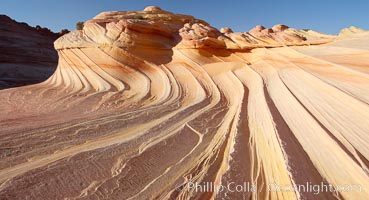
The Second Wave at sunset. The Second Wave, a curiously-shaped sandstone swirl, takes on rich warm tones and dramatic shadowed textures at sunset. Set in the North Coyote Buttes of Arizona and Utah, the Second Wave is characterized by striations revealing layers of sedimentary deposits, a visible historical record depicting eons of submarine geology.
Location: North Coyote Buttes, Paria Canyon-Vermilion Cliffs Wilderness, Arizona
Image ID: 20653
Location: North Coyote Buttes, Paria Canyon-Vermilion Cliffs Wilderness, Arizona
Image ID: 20653
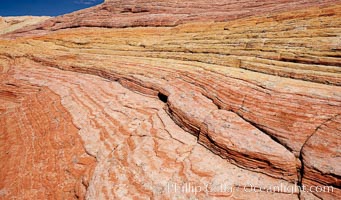
Striations in sandstone tell of eons of sedimentary deposits, a visible geologic record of the time when this region was under the sea.
Location: North Coyote Buttes, Paria Canyon-Vermilion Cliffs Wilderness, Arizona
Image ID: 20665
Location: North Coyote Buttes, Paria Canyon-Vermilion Cliffs Wilderness, Arizona
Image ID: 20665
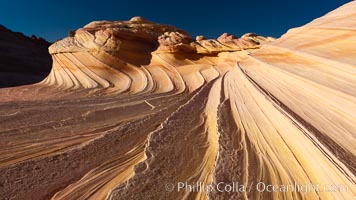
The Second Wave at sunset. The Second Wave, a curiously-shaped sandstone swirl, takes on rich warm tones and dramatic shadowed textures at sunset. Set in the North Coyote Buttes of Arizona and Utah, the Second Wave is characterized by striations revealing layers of sedimentary deposits, a visible historical record depicting eons of submarine geology.
Location: North Coyote Buttes, Paria Canyon-Vermilion Cliffs Wilderness, Arizona
Image ID: 20671
Location: North Coyote Buttes, Paria Canyon-Vermilion Cliffs Wilderness, Arizona
Image ID: 20671
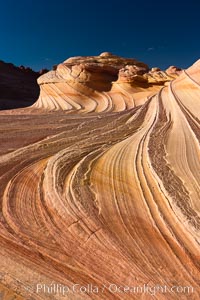
The Second Wave at sunset. The Second Wave, a curiously-shaped sandstone swirl, takes on rich warm tones and dramatic shadowed textures at sunset. Set in the North Coyote Buttes of Arizona and Utah, the Second Wave is characterized by striations revealing layers of sedimentary deposits, a visible historical record depicting eons of submarine geology.
Location: North Coyote Buttes, Paria Canyon-Vermilion Cliffs Wilderness, Arizona
Image ID: 20677
Location: North Coyote Buttes, Paria Canyon-Vermilion Cliffs Wilderness, Arizona
Image ID: 20677
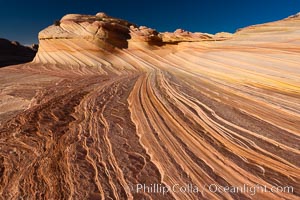
The Second Wave at sunset. The Second Wave, a curiously-shaped sandstone swirl, takes on rich warm tones and dramatic shadowed textures at sunset. Set in the North Coyote Buttes of Arizona and Utah, the Second Wave is characterized by striations revealing layers of sedimentary deposits, a visible historical record depicting eons of submarine geology.
Location: North Coyote Buttes, Paria Canyon-Vermilion Cliffs Wilderness, Arizona
Image ID: 20689
Location: North Coyote Buttes, Paria Canyon-Vermilion Cliffs Wilderness, Arizona
Image ID: 20689
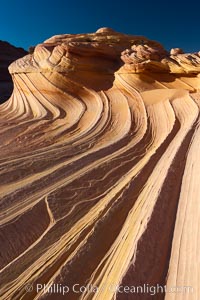
The Second Wave at sunset. The Second Wave, a curiously-shaped sandstone swirl, takes on rich warm tones and dramatic shadowed textures at sunset. Set in the North Coyote Buttes of Arizona and Utah, the Second Wave is characterized by striations revealing layers of sedimentary deposits, a visible historical record depicting eons of submarine geology.
Location: North Coyote Buttes, Paria Canyon-Vermilion Cliffs Wilderness, Arizona
Image ID: 20694
Location: North Coyote Buttes, Paria Canyon-Vermilion Cliffs Wilderness, Arizona
Image ID: 20694
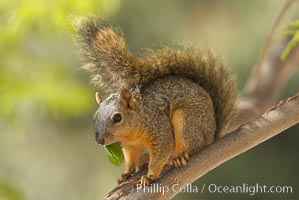
Eastern fox squirrel. The eastern fox squirrel historically occur in the eastern and central portions of North America, but have been introduced in the 1900's to urban areas in the western United States. They are the largest of the North American squirrels, reaching 29 inches in length and up to 3 pounds. They are generalist feeders with a diet that varies according to their habitat, including nuts, seed, bird eggs and chicks, frogs, flowers and agricultural crops.
Species: Eastern fox squirrel, Sciurus niger
Location: Los Angeles, California
Image ID: 18964
Species: Eastern fox squirrel, Sciurus niger
Location: Los Angeles, California
Image ID: 18964
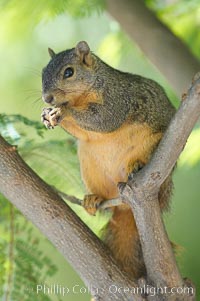
Eastern fox squirrel. The eastern fox squirrel historically occur in the eastern and central portions of North America, but have been introduced in the 1900's to urban areas in the western United States. They are the largest of the North American squirrels, reaching 29 inches in length and up to 3 pounds. They are generalist feeders with a diet that varies according to their habitat, including nuts, seed, bird eggs and chicks, frogs, flowers and agricultural crops.
Species: Eastern fox squirrel, Sciurus niger
Location: Los Angeles, California
Image ID: 18965
Species: Eastern fox squirrel, Sciurus niger
Location: Los Angeles, California
Image ID: 18965
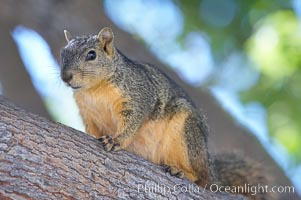
Eastern fox squirrel. The eastern fox squirrel historically occur in the eastern and central portions of North America, but have been introduced in the 1900's to urban areas in the western United States. They are the largest of the North American squirrels, reaching 29 inches in length and up to 3 pounds. They are generalist feeders with a diet that varies according to their habitat, including nuts, seed, bird eggs and chicks, frogs, flowers and agricultural crops.
Species: Eastern fox squirrel, Sciurus niger
Location: Los Angeles, California
Image ID: 18966
Species: Eastern fox squirrel, Sciurus niger
Location: Los Angeles, California
Image ID: 18966
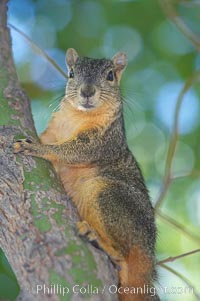
Eastern fox squirrel. The eastern fox squirrel historically occur in the eastern and central portions of North America, but have been introduced in the 1900's to urban areas in the western United States. They are the largest of the North American squirrels, reaching 29 inches in length and up to 3 pounds. They are generalist feeders with a diet that varies according to their habitat, including nuts, seed, bird eggs and chicks, frogs, flowers and agricultural crops.
Species: Eastern fox squirrel, Sciurus niger
Location: Los Angeles, California
Image ID: 18967
Species: Eastern fox squirrel, Sciurus niger
Location: Los Angeles, California
Image ID: 18967
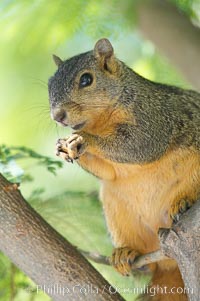
Eastern fox squirrel. The eastern fox squirrel historically occur in the eastern and central portions of North America, but have been introduced in the 1900's to urban areas in the western United States. They are the largest of the North American squirrels, reaching 29 inches in length and up to 3 pounds. They are generalist feeders with a diet that varies according to their habitat, including nuts, seed, bird eggs and chicks, frogs, flowers and agricultural crops.
Species: Eastern fox squirrel, Sciurus niger
Location: Los Angeles, California
Image ID: 18968
Species: Eastern fox squirrel, Sciurus niger
Location: Los Angeles, California
Image ID: 18968
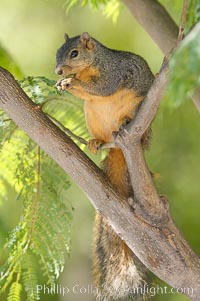
Eastern fox squirrel. The eastern fox squirrel historically occur in the eastern and central portions of North America, but have been introduced in the 1900's to urban areas in the western United States. They are the largest of the North American squirrels, reaching 29 inches in length and up to 3 pounds. They are generalist feeders with a diet that varies according to their habitat, including nuts, seed, bird eggs and chicks, frogs, flowers and agricultural crops.
Species: Eastern fox squirrel, Sciurus niger
Location: Los Angeles, California
Image ID: 18969
Species: Eastern fox squirrel, Sciurus niger
Location: Los Angeles, California
Image ID: 18969
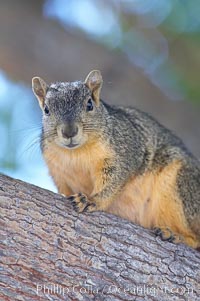
Eastern fox squirrel. The eastern fox squirrel historically occur in the eastern and central portions of North America, but have been introduced in the 1900's to urban areas in the western United States. They are the largest of the North American squirrels, reaching 29 inches in length and up to 3 pounds. They are generalist feeders with a diet that varies according to their habitat, including nuts, seed, bird eggs and chicks, frogs, flowers and agricultural crops.
Species: Eastern fox squirrel, Sciurus niger
Location: Los Angeles, California
Image ID: 18970
Species: Eastern fox squirrel, Sciurus niger
Location: Los Angeles, California
Image ID: 18970
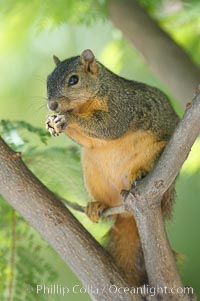
Eastern fox squirrel. The eastern fox squirrel historically occur in the eastern and central portions of North America, but have been introduced in the 1900's to urban areas in the western United States. They are the largest of the North American squirrels, reaching 29 inches in length and up to 3 pounds. They are generalist feeders with a diet that varies according to their habitat, including nuts, seed, bird eggs and chicks, frogs, flowers and agricultural crops.
Species: Eastern fox squirrel, Sciurus niger
Location: Los Angeles, California
Image ID: 18971
Species: Eastern fox squirrel, Sciurus niger
Location: Los Angeles, California
Image ID: 18971
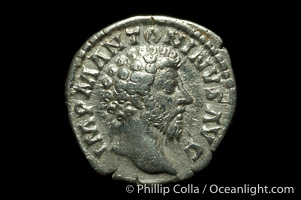
Roman emperor Marcus Aurelius (161-180 A.D.), depicted on ancient Roman coin (silver, denom/type: Denarius) (Denarius, VF, 3.2 g.. Obverse: IMP M ANTONINVS AVG. Reverse: CONCORD AVG IMP XVII, COX III exergue.).
Image ID: 06560
Image ID: 06560
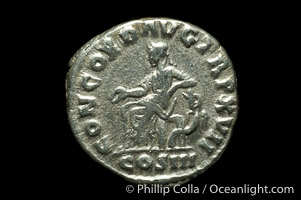
Roman emperor Marcus Aurelius (161-180 A.D.), depicted on ancient Roman coin (silver, denom/type: Denarius) (Denarius, VF, 3.2 g.. Obverse: IMP M ANTONINVS AVG. Reverse: CONCORD AVG IMP XVII, COX III exergue.).
Image ID: 06561
Image ID: 06561
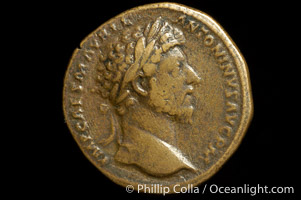
Roman emperor Marcus Aurelius (161-180 A.D.), depicted on ancient Roman coin (bronze, denom/type: Sestertius) (AE Sestertius. Obverse: IMP C, AES M AVREL ANTONINVS AVG PM. Reverse: CONCORD AVGVSTOR TR P XVI COS III SC.).
Image ID: 06562
Image ID: 06562
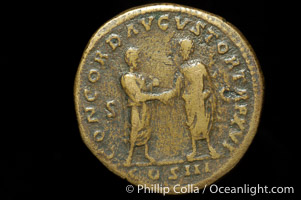
Roman emperor Marcus Aurelius (161-180 A.D.), depicted on ancient Roman coin (bronze, denom/type: Sestertius) (AE Sestertius. Obverse: IMP C, AES M AVREL ANTONINVS AVG PM. Reverse: CONCORD AVGVSTOR TR P XVI COS III SC.).
Image ID: 06563
Image ID: 06563
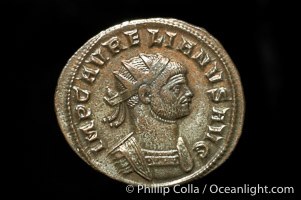
Roman emperor Aurelian (270-275 A.D.), depicted on ancient Roman coin (bronze, denom/type: Antoninianus) (Antoninianus VF. Obverse: IMP C AVRELIANVS AVG. Reverse: CONCORDIA MILITVM, S, XXIVI exergue.).
Image ID: 06626
Image ID: 06626
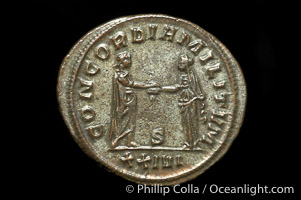
Roman emperor Aurelian (270-275 A.D.), depicted on ancient Roman coin (bronze, denom/type: Antoninianus) (Antoninianus VF. Obverse: IMP C AVRELIANVS AVG. Reverse: CONCORDIA MILITVM, S, XXIVI exergue.).
Image ID: 06627
Image ID: 06627
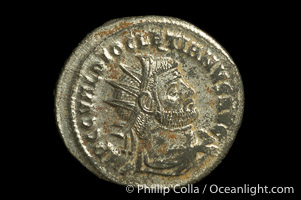
Roman emperor Diocletian (285-305 A.D.), depicted on ancient Roman coin (bronze, denom/type: Antoninianus) (Antoninianus aEF, RIC 256, Sear 3510, Cohan 33. Obverse: IMP C C VAL DIOCLETIANVS AVG. Reverse: CONCORDIA MILITVM).
Image ID: 06648
Image ID: 06648
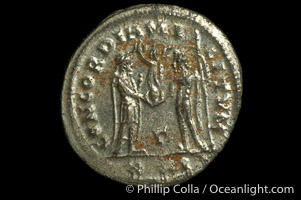
Roman emperor Diocletian (285-305 A.D.), depicted on ancient Roman coin (bronze, denom/type: Antoninianus) (Antoninianus aEF, RIC 256, Sear 3510, Cohan 33. Obverse: IMP C C VAL DIOCLETIANVS AVG. Reverse: CONCORDIA MILITVM).
Image ID: 06649
Image ID: 06649
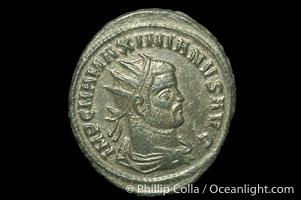
Roman emperor Maximianus (286-305 A.D.), depicted on ancient Roman coin (bronze, denom/type: Antoninianus) (Antoninianus Sear 3611. Obverse: IMP C M A MAXIMIANVS P F AVG. Reverse: CONCORDIA MILITVM).
Image ID: 06650
Image ID: 06650
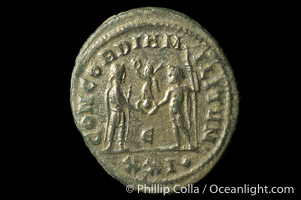
Roman emperor Maximianus (286-305 A.D.), depicted on ancient Roman coin (bronze, denom/type: Antoninianus) (Antoninianus Sear 3611. Obverse: IMP C M A MAXIMIANVS P F AVG. Reverse: CONCORDIA MILITVM).
Image ID: 06651
Image ID: 06651
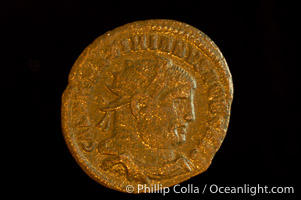
Roman emperor Galerius (293-305 A.D.), depicted on ancient Roman coin (bronze, denom/type: Antoninianus) (AE , Antoninianus, Concordia Militvm S-3701).
Image ID: 06658
Image ID: 06658
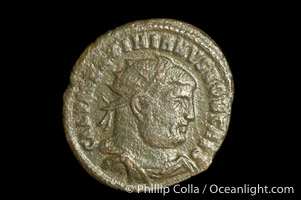
Roman emperor Galerius (293-305 A.D.), depicted on ancient Roman coin (bronze, denom/type: Antoninianus) (AE , Antoninianus, Concordia Militvm S-3701).
Image ID: 06659
Image ID: 06659
